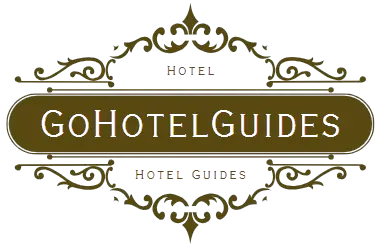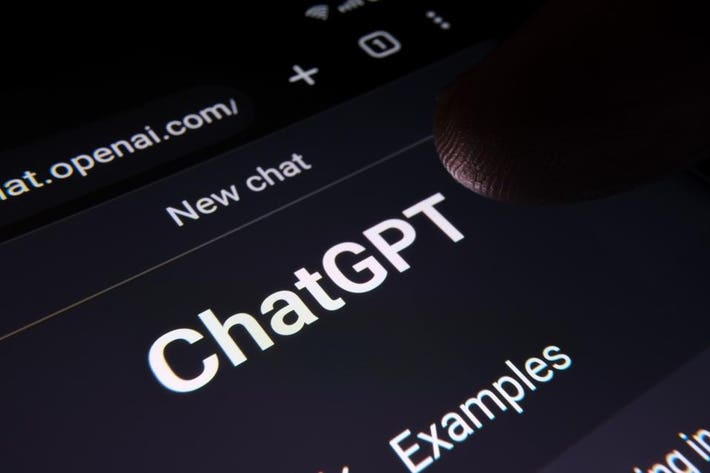Some examples of technical noise include static interference, echo, distortion, and background noise. In many technological applications, these noises can impact the quality and clarity of audio and visual communication.
Technical noise refers to various disruptions or disturbances that hinder the intended communication between individuals using technology. It can occur in various forms, such as static interference or background noise, which can degrade the quality of audio signals. For instance, when making a phone call, static interference may cause crackling sounds, making it difficult to hear the other person clearly.
Similarly, in video conferences, echo or distortion can hinder communication by distorting the visual and auditory cues. It is important to identify and minimize such technical noise to ensure smooth and effective communication in various technological applications.
The Impact Of Technical Noise
Technical noise can disrupt communication and hinder decision-making. Examples include background chatter, poor audio quality, and excessive jargon in technical discussions. These distractions can lead to misunderstandings and errors, impacting productivity and the quality of work.
In Communication
Technical noise can significant impact communication in various ways. It can distort or disrupt the message being conveyed, making it difficult for the intended meaning to be properly understood. When technical noise interferes with communication channels, it can lead to misunderstandings, confusion, and misinterpretations. This can be particularly detrimental in important conversations, whether it is a business negotiation, a team meeting, or even a casual conversation with a friend.
For example, imagine you are in a video conference meeting with colleagues from different locations. If there is background noise, poor audio quality, or even a delay in transmission, it can hinder effective communication. It can cause the speaker’s voice to be unclear or muffled, crucial information to be missed, and the overall flow of the conversation to be disrupted. Consequently, decisions can be made based on incomplete or inaccurate information, leading to potential misunderstandings or errors.
Moreover, technical noise can also impact non-verbal communication in the digital age. Body language, facial expressions, and gestures play an important role in conveying meaning and emotions. However, when video quality is poor or there are glitches in the transmission, these visual cues can be distorted or lost entirely. This can make it difficult to accurately interpret the speaker’s intentions or feelings, leading to potential miscommunication or misunderstanding.
In Problem-solving
Technical noise does not only affect communication but can also hinder effective problem-solving. When trying to solve complex issues or troubleshoot technical problems, a clear and uninterrupted flow of information is crucial. Technical noise can impede this flow, making it challenging to identify the root cause of the problem or develop appropriate solutions.
For instance, imagine you are a software engineer debugging a program. If there are distractions, background noise, or interruptions, it can disrupt your concentration and focus. This can lead to mistakes or oversights, causing you to spend more time on problem-solving or even missing the root cause entirely. Technical noise can sabotage problem-solving efforts by introducing unwanted variables or distractions that divert attention from the task at hand.
Additionally, technical noise can also impact collaboration and teamwork in problem-solving scenarios. If team members are unable to effectively communicate or share information due to technical disruptions, it can hinder the collective effort to find solutions. Miscommunications or delays caused by technical noise can result in misunderstandings, duplicated efforts, or missed opportunities for collaboration.

Credit: www.eslbuzz.com
Identifying Technical Noise
Technical noise can impede effective communication, making it essential to identify and eliminate it. By being aware of common examples of technical noise, we can minimize its impact and improve clarity in our communication. Let’s explore two prominent forms of technical noise: ambiguity in vocabulary and complex sentence structures.
Ambiguity In Vocabulary
Ambiguity in vocabulary occurs when certain terms or phrases have multiple meanings or are not well-understood by all parties involved. This can lead to confusion and misinterpretation of information, hindering effective communication. To minimize ambiguity in vocabulary, consider the following:
- Use clear, commonly understood words and phrases that align with the target audience’s knowledge level.
- Provide definitions or clarifications for technical terms that may be unfamiliar to some readers.
- Avoid jargon or industry-specific acronyms unless you are confident the audience will understand them.
By adopting these practices, you can ensure that your message is conveyed clearly without being hindered by ambiguous vocabulary.
Complex Sentence Structures
Complex sentence structures can contribute to technical noise by making sentences difficult to comprehend. When sentences are overly long or convoluted, readers may struggle to grasp the intended meaning. To enhance readability and reduce the impact of complex sentence structures, keep the following tips in mind:
- Break down long sentences into shorter, concise ones to maintain clarity.
- Avoid excessive use of subordinate clauses, as they can make sentences harder to follow.
- Use bullet points or numbered lists when presenting information in a structured manner.
By simplifying sentence structures, you can improve comprehension and ensure that your message is effectively conveyed.
Consequences Of Technical Noise
Technical noise can have significant consequences on various aspects of our lives. Examples of technical noise include distorted audio, poor signal reception, and interference on electronic devices. Such disruptions can hinder communication, compromise data integrity, and impact overall user experience.
The consequences of technical noise can have a significant impact on various aspects of business and communication. It can lead to misinterpretation of messages and inefficient solutions, which can impede productivity and hinder progress.Misinterpretation Of Messages
Misinterpretation of messages is a common consequence of technical noise, leading to confusion and potential errors. When communication is disrupted by technical interference or glitches, the intended meaning of a message may be lost or distorted. This can result in misunderstandings and miscommunication among team members, clients, or stakeholders, impacting the clarity and accuracy of information exchange.Inefficient Solutions
Technical noise can lead to the generation of inefficient solutions, as distorted or incomplete data may result in flawed decision-making processes. When technical noise interferes with the transmission or processing of information, it can lead to the adoption of suboptimal strategies or the implementation of incorrect solutions. This can ultimately undermine performance and waste valuable resources on ineffective approaches. In summary, the consequences of technical noise, such as misinterpretation of messages and inefficient solutions, can have adverse effects on communication and decision-making processes within an organization. It is crucial to address and mitigate technical noise to ensure smooth and accurate information flow, enabling more effective collaboration and problem-solving.
Credit: optinmonster.com
Strategies To Reduce Technical Noise
When it comes to technical subjects, it’s easy to get lost in a sea of jargon and complex concepts. This can create a barrier between experts and non-experts, hindering effective communication and understanding. To overcome this challenge, it’s crucial to employ strategies that simplify vocabulary and ensure clarity in communication. By doing so, technical noise can be reduced, making complex topics more accessible to a broader audience.
Simplify Vocabulary
In technical fields, there is often a tendency to use complex terminology that can confuse or intimidate non-experts. To make your content more accessible, it’s essential to simplify the vocabulary. By using everyday language and avoiding technical jargon, you can bridge the gap between experts and non-experts. Here are a few strategies to simplify vocabulary:
- Replace technical terms with layman’s terms where possible
- Use short and simple phrases instead of long, convoluted sentences
- Avoid acronyms or explain them in parentheses after the first mention
- Find relatable analogies or examples to illustrate complex concepts
Clarity In Communication
Clear communication is key to reducing technical noise. By ensuring that your message is concise, well-structured, and easy to understand, you can effectively convey complex information without overwhelming your audience. Here are a few strategies to achieve clarity in communication:
- Organize your content logically, using headings and subheadings to break down complex topics into manageable sections
- Use bullet points or numbered lists to present information in a concise and easily digestible format
- Break down complex ideas into simple steps or processes
- Emphasize important information using bold or italics to draw attention
- Include visuals such as diagrams, charts, or infographics to support your explanations
By employing these strategies, you can effectively reduce technical noise and ensure that your content is accessible to a wider audience. Remember, simplicity and clarity are key when it comes to engaging readers and facilitating understanding in technical subjects.
Harnessing The Power Of Clear Language
Clear and concise communication is essential in the world of technology. With the rapid pace of innovation and complex technical concepts, it can be easy for technical noise to creep into our communication. Technical noise refers to the use of jargon, acronyms, and overly complicated language that often alienates non-technical stakeholders and hinders effective collaboration. However, by harnessing the power of clear language, we can improve collaboration and enhance problem-solving in our technical projects.
Improved Collaboration
When collaborating on technical projects, effective communication is key. Clear language allows everyone involved, regardless of their technical expertise, to understand and contribute meaningfully. By using simple and straightforward language, we can bridge the gap between technical and non-technical team members, fostering a more inclusive and productive environment.
The use of clear language also encourages active listening and engagement during meetings and discussions. When stakeholders can easily understand the information being presented, they are more likely to ask questions and seek clarifications. This open dialogue leads to a deeper understanding of the project requirements, helps identify potential issues early on, and ultimately improves the quality of the final product.
Moreover, clear communication minimizes the risk of misinterpretation and misunderstandings. Everyone involved in the project can have a shared understanding of the goals, tasks, and expectations, reducing the likelihood of errors or rework.
Enhanced Problem-solving
Complex technical problems often require a collaborative approach to find effective solutions. By using clear language, we can make the problem-solving process more accessible to all team members, regardless of their technical background. This inclusive approach encourages diverse perspectives and ideas, leading to more comprehensive and innovative solutions.
Clear language also helps break down complex problems into simpler, more manageable parts. By avoiding jargon and technical noise, we can focus on explaining the core issues and potential solutions in a way that everyone can understand. This promotes a transparent and efficient problem-solving process, where all team members can actively contribute their insights and expertise.
In addition, clear communication during problem-solving discussions enables effective decision-making. When information is presented in a straightforward manner, team members can quickly assess and evaluate different options. This facilitates a more agile decision-making process, allowing for timely resolutions and progress.

Credit: www.amazon.com
Frequently Asked Questions For Technical Noise Examples
What Is The Technical Definition Of Noise?
Noise is a technical term that refers to unwanted or excessive sounds. It can disrupt communication, cause discomfort, and affect overall well-being.
What Is Noise In Technical Communication?
Noise in technical communication refers to any interference that disrupts the clarity of the message. It can include distractions, errors, or irrelevant information that hinders the understanding of the intended content. Identifying and reducing noise is essential for effective communication in technical contexts.
What Are The 7 Noises In Communication?
The 7 noises in communication include physical noise, physiological noise, semantic noise, psychological noise, socio-cultural noise, channel noise, and feedback noise. These noises can disrupt effective communication processes and hinder understanding.
What Are The 4 Types Of Noise As A Barrier To Communication?
The 4 types of noise that can be barriers to communication are physical noise, physiological noise, psychological noise, and semantic noise. Physical noise refers to external distractions, physiological noise includes bodily factors, psychological noise relates to mental distractions, and semantic noise involves misunderstandings due to language or cultural differences.
Conclusion
Incorporating technical noise in daily life can have detrimental effects on productivity and mental well-being. By being aware of common examples, such as background chatter and electronic interference, individuals can take steps to minimize their impact. Implementing practical solutions, like noise-cancelling headphones or sound-proofing techniques, can ultimately lead to a more peaceful and focused environment.

